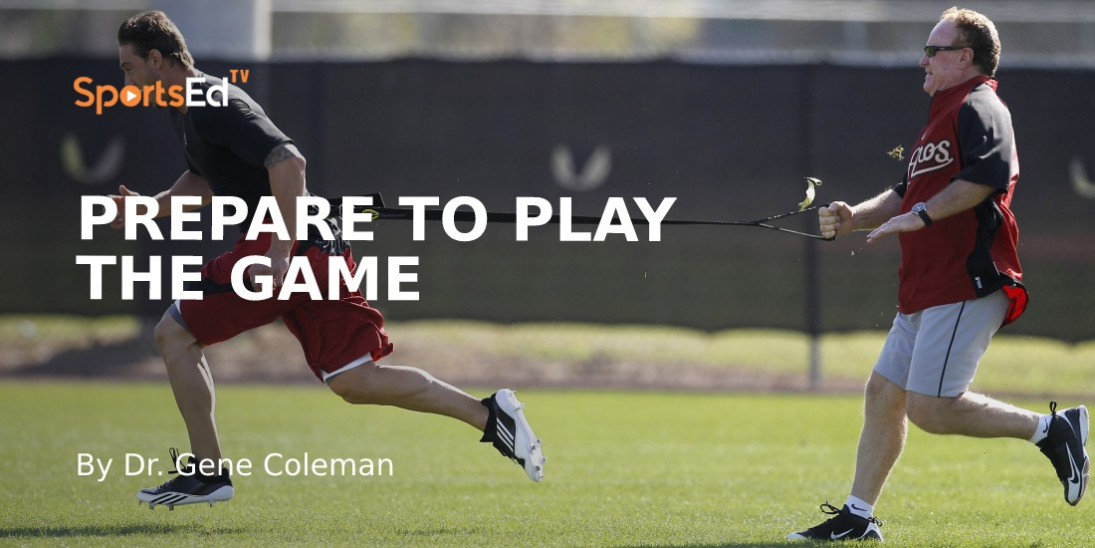Baseball, Strength And Conditioning
Welcome and thanks for visiting...

Prepare to Play the Game

The goals when designing training programs for baseball players at all levels from MLB to high school are to: 1) prepare to meet the physical demands of the game: 2) overcome the stresses of the season; 3) minimize the risk of injury; and 4) maximize performance. If a lift, exercise or movement does not address at least one of these goals, don’t include it in your program. Baseball players are not bodybuilders, they don’t stand in one place and move one muscle or muscle group at a time. They are not Olympic lifters. Olympic lifting is a sport in and of itself. Don’t waste time trying to teach a baseball player to become an Olympic lifter. Use time wisely. Use it to help athletes become better baseball players, not Olympic lifters.
Baseball players are not Navy Seals. While it is honorable to recognize the hard work, dedication and expertise of the Navy Seals, baseball players are not going to have to swim to a beach, jump from an aircraft, infiltrate a hostile facility, kick in a door or engage in hand-to-hand combat. Respect the Seals, but understand that going through Seal training will not make a baseball player a better baseball player, nor will having a Seal go through spring training make him a better Seal.
Baseball is a skill-oriented sport in which players have to start, stop, run, swing, throw, catch, field, hit, pitch, change direction, jump and slide in response to the action or actions of an opposing player or players. Baseball players need to learn how to improve their ability to apply and utilize these skills during game and practice situations, not perform a snatch, scale a wall or run a 6-minute mile. Training should be as baseball specific as possible because: 1) you get what you train for and 2) the energy system(s), movements and endocrine responses used in practice and games are the systems that are trained.
While baseball players need to be strong, hitting, pitching, throwing and running are power activities. Strength is important, but power is essential for max performance. For athletic development and performance, players need a total body, development program that produces an optimal level of strength, speed, agility, balance, coordination, quickness, power and conditioning plus individual and team skill training.
What constitutes an “optimal” level of each attribute is related to the training background and playing experience of each player. Many pro players from smaller US colleges and high schools as well as those from some countries outside the US, for example, often lack the training opportunities, background and experience of those from larger colleges and high schools. As a result, the emphasis in many Extended-Spring Training programs, Short-Season teams and Latin American Academies is to help players understand the foundations of the program. Given their limited training opportunities and experiences, players are taught the importance of proper exercise technique. Emphasis is focused on “how to do” basic exercises instead of “how much to do”. Players are taught that performing a perfect rep in every set is more important in than how much they can lift or how many sets and reps they can perform.
They are also taught that work, rest and nutrition are extremely important. Work stimulates growth, nutrition fuels growth and growth occurs during recovery. The three are co-dependent. If one is missing or lacking, growth can be limited, progress delayed, personal health impacted, performance hindered and the risk of injury increased.
Programs are structured, progressive and personalized. They follow a periodization model in which the training year is divided into four phases: post-season, off-season, pre-season an in-season phases. Each phase has specific goals and builds on the previous phase. Exercise selection and training frequency, volume, intensity and rest intervals in each phase are predetermined to help the athlete achieve specific goals when needed, avoid overtraining, reduce the risk of injury and prepare the athlete for the next phase.
Acute and chronic work: rest loads are monitored to ensure recovery and minimize the risk of overtraining, burnout and injury. Personal responsibility is emphasized and players are encouraged to be responsible for their preparation and performance on and off the field.





